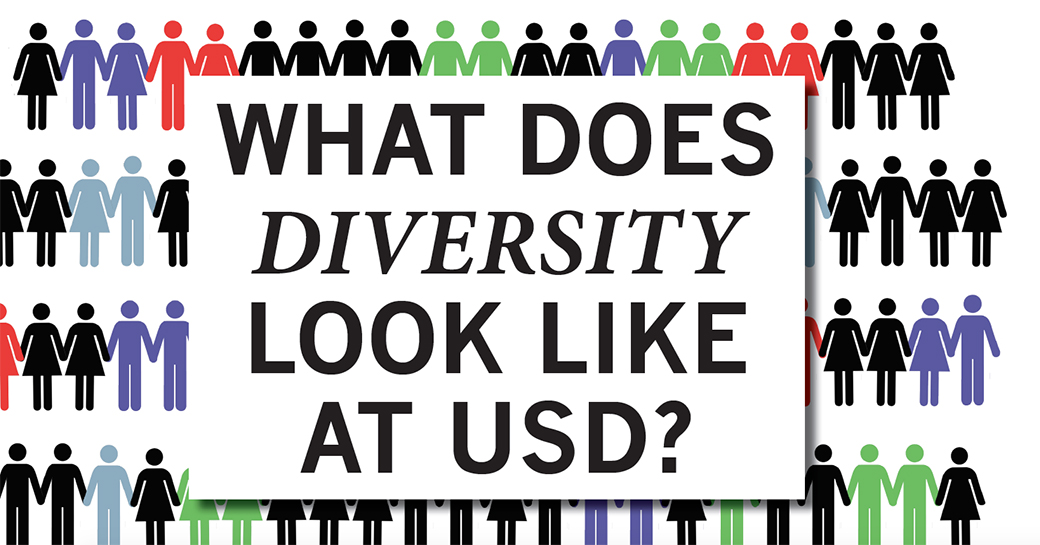
Ethnic diversity increases, multicultural minor discussed
Diversity, in all of its shapes and forms, is something USD officials say they’re still trying to bring more of to campus.
Jesus Trevino, the associate vice president for diversity at USD, said the number of Latino, African American and Native American students has risen on campus since last year, while the number of Asian-Americans on campus has declined.
“I’m heartened by the numbers, that they’re going in the right direction, and we haven’t had that for awhile,” he said.
Trevino said diversity is more than just numbers, though.
“The end goal is really not numbers – let’s get the numbers up,” Trevino said. “Really, the end goal is, do we have faculty? Do we have students that actually represent and have an interest in diversity and want to make a contribution to it?”
To implement what USD has coined “inclusive excellence,” Trevino said the university is working on embedding “diverse curriculum” into classrooms by making sure classroom discussion and examples appeal to different types of communities.
Trevino said he sometimes talks with professors and lecturers about ways they can be more inclusive.
“I meet with every search committee to talk to them about these issues and then in some cases I do meet with the faculty that are being interviewed just so that they can understand diversity and inclusive excellence,” Trevino said. “So if you come here, understand that there is an expectation that you will be attentive to these types of things.”
In addition to ethnicity, diversity also encompasses sexuality, nationality and different backgrounds, Trevino added.
In the fall, Trevino said USD plans to offer a multicultural minor, which will incorporate classes from a range of diverse studies. He likened diversity and inclusive excellence to a “dance,” and said that to appeal to “dancers,” the “dance floor” must be renovated.
“Diversity is like being invited to a dance and being inclusive is being asked to dance,” he said.
A survey about diversity on campus is currently being circulated among students and faculty at USD. Trevino said the results of that survey should be available in the next few weeks.
Another aspect of diversity on campus is the number of international students who call USD home each year. Patrick Morrison, the international student adviser, said there’s about 215 students from 52 different countries currently on campus.
“One thing we have seen – one thing that’s sort of impressive about the USD student population – is the sheer diversity of countries where the students come from,” Morrison said.
Morrison said international students add another layer of diversity to the campus and state that they sometimes otherwise lacks in.
“To be frank, we don’t have a lot of diversity in South Dakota outside of our Native American population. We have a growing ethnic communities in Sioux Falls, which is always nice to see, but again, really, we’re still a predominately white state,” he said.
The hope of university officials, Morrison said, is to connect the future leaders of the U.S. to future leaders of foreign nations to improve relations and understanding between the groups.
“To help bring in those students from overseas that are coming in and helping us have a more diverse campus and further internationalize our campus, which is a goal of the university, is pretty rewarding and a good thing to continue,” he said.
Junior April Zhang, an international student from China, arrived in South Dakota last month after transferring from a college in Hawaii. She said while South Dakota is less diverse than some places she’s visited, it’s much more diverse than China.
“USD is pretty white, in my opinion,”she said.
Zhang said she wishes both international students and South Dakotans would make more of an effort to connect to one another.
“It’s like a two-side relationship, but I would like two sides to be working a little more,” she said. “I think both sides would have a good relationship with each other.”

